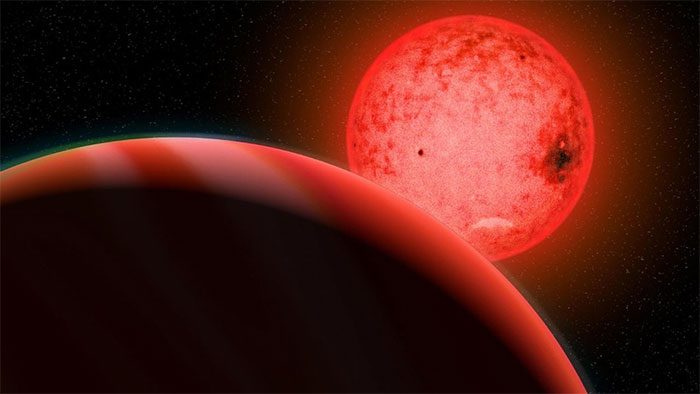Astronomers have discovered an unusual large planet orbiting a small star located about 280 light-years from Earth.

The newly discovered planet has an unusual size. (Photo: Katherine Cain/Carnegie Institution for Science).
According to CNN, the gigantic size of the newly discovered planet, named TOI 5205b, has led researchers to consider it a “forbidden planet.” It is comparable in size to Jupiter, the largest planet in our Solar System. Additionally, astronomers discovered TOI 5205b using NASA’s TESS space telescope.
The planet-hunting mission, which began in 2018, surveyed the light from nearby bright stars. This helped detect dips in the light emitted by the star, allowing for the study of the orbiting satellites. The TESS space telescope has identified thousands of potential planets.
To discover the “forbidden planet,” researchers focused on the red dwarf star named TOI-5205, which has a size and mass approximately 40% that of the Sun. Moreover, it has a temperature of around 3,127 degrees Celsius.
According to a study published on February 21 in The Astronomical Journal, the planet TOI 5205b is a remarkable discovery.
“The host star, TOI-5205, is only about 4 times the size of Jupiter. Somehow, it has managed to form a planet the size of Jupiter. This is quite surprising,” stated the study’s author Shubham Kanodia, a postdoctoral researcher at the Carnegie Institution for Science.
To illustrate, researchers compared this planet to a pea orbiting a lemon. In contrast, Jupiter, which is the same size as TOI 5205b, was likened to a pea orbiting a grapefruit (representing the Sun). This implies that the planet TOI 5205b has an unusually large size.

Illustrative image from researchers referring to the unusual size of TOI 5205b. (Photo: Katherine Cain/Carnegie Institution for Science).
Kanodia further explained that the existence of TOI-5205b has expanded humanity’s understanding of how planets are formed. “Based on our understanding of planet formation, TOI-5205b should not exist. Therefore, it is considered a forbidden planet,” Kanodia remarked.
Looking ahead, researchers plan to observe this planet in the future using the James Webb Space Telescope, aiming to check if it has an atmosphere and uncover more secrets about how it formed.


















































